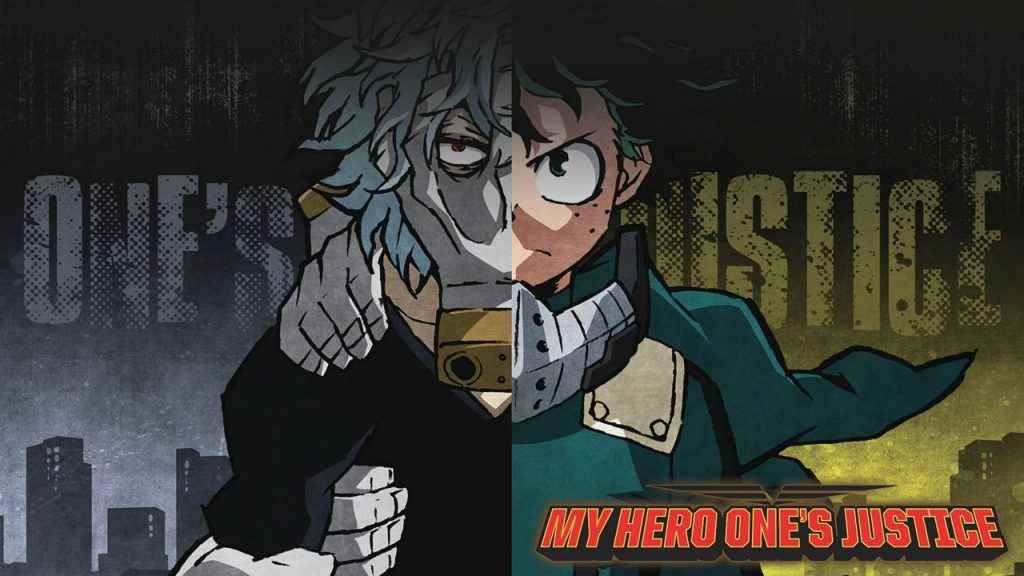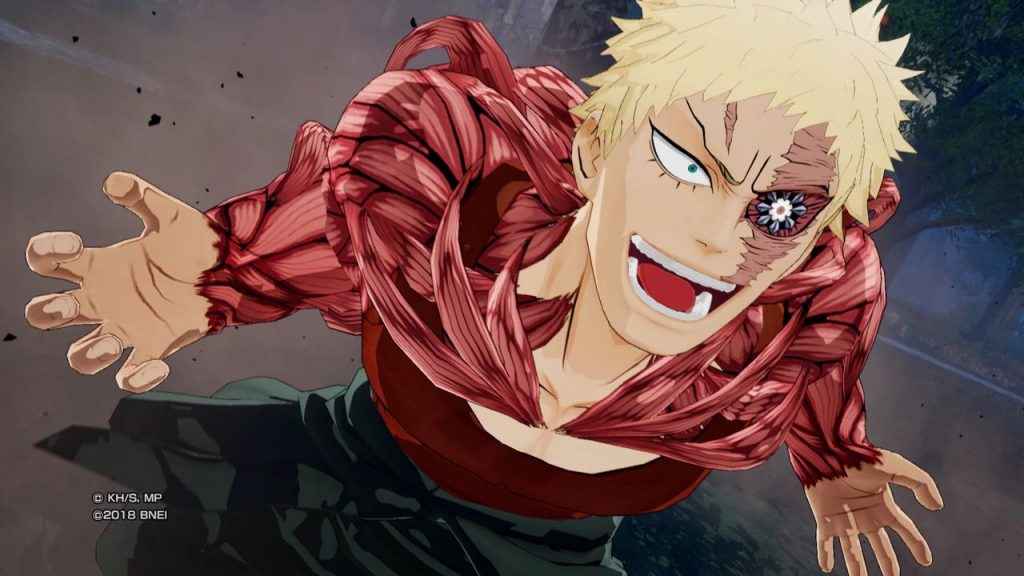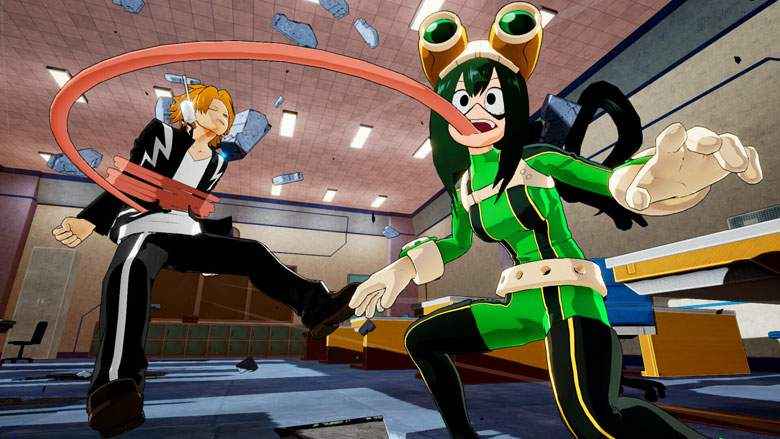My Hero: One’s Justice is a super powered treat for any fans of the popular series who have wondered what it’d be like to go to superhero school. The arena brawler overdelivers on its promise of action, bright anime visuals, and pointy haircuts as it retells the show’s second and third season. It feels great to relive the story’s most dramatic fights from the perspective of the good guys as well as the bad. However, the scenario range makes for an awkward entry point for newcomers and the comic-like story panels intersecting the fights feel like a “Previously on” at the beginning of your favorite show.
Making full use of this wonderful anime-fighter renaissance we find ourselves in, Bandai Namco and studio Byking demonstrated their understanding of the genre and source material as they developed each unique character’s unique moveset.
Combat in My Hero Academia is intensely varied from character to character. Each one’s unique Quirks (super powers)and fighting styles are captured with loving attention to detail.That said, controls themselves can feel a bit underwhelming after a while as repetition betrays an unfortunate lack of depth. The end result does not necessarily go Plus Ultra, but it certainly demonstrates loads of potential.
Combat is flashy and bright, and fans of Naruto or Dragon Ball games will be the quickest to feel at home with the familiar dash, guard, combo, patterns of the genre. Combos are comprised of speedy normal attacks, counter attacks, and unblockable attacks which is just a fancy way of saying “throw.” These moves make up a sort of triangle as normal attacks connect faster and beat unblockables, counters beat normal, and slow unblockable throws trump counters.
Commanding each character’s special Quirk is varied and personal. Whether you’re controlling the high speed Gran Torino or lobbing icicles and fireballs as Todoroki, there are plenty of characters to learn and master. That’s where My Hero: One’s Justice really shines. Even if all you’re really doing is using the same simple button triangle, the variety in the superpowers add a level of depth beyond just button mashing. Will you cancel your enemy’s abilities with Eraserhead? Lob rocks with Ochako’s Antigravity? By making move commands overly simple, the developers set the stage for the real star of combat: the super powers, duh.
The game’s story mode briefly touches on main character’s, Izuku Midoriya, backstory. In a world where 80+% of the population has Quirks, Izuku is born without one, and his dream of becoming a hero of justice comes to an abrupt halt. A lot of things happen in that first season, but to make a great story short: Izuku meets his personal idol, the number one hero, All Might, and inherits his uber-powerful Quirk: One For All. Story Mode glosses over practically all of this, leaving the entire beginning to either fan memory or newcomer imagination as they plow straight on to the culmination of a dramatic arc in the middle of season two.
The story mode does a good job of retooling the drama and intensity from its source material, but the majority of the action and dialogue is delivered through manga-like static panels or short combat cutscenes with no English voice acting – another barrier to entry for new fans. A case can be made for a fighting game’s story mode starting and ending at some of the most dramatic and action-packed points in the series, but it does result in a stumbling experience almost entirely skippable for fans who still remember the source material.
All that aside, My Hero: One’s Justice’s redemption arc begins beyond Story Mode. Mission Mode has players select a fighter and progress their way through a series of opponents and maps with increasing difficulty. The schtick here is that your health carries over from battle to battle creating an emphasis on timing and execution throughout those fights. Take too much damage, and you’re going to have a tough time against your even stronger next opponent. Thankfully, your party does gain XP and level as they progress. Additionally, you can restore your player’s health or add other buffs after a successful battle by using food rewards – at the cost of decreasing your final score at the end.
Juggling your character’s success from battle to battle while managing the special rules for each mission adds engagement and challenge, making you want to win – an investment the story mode would have benefited heavily from.
While there is no character creation, there is the option to customize the costumes of your fighters. After each successful fight, you are rewarded with gold based off your combat rating. You can then use that gold to purchase costume pieces, accessories, voice lines, and more. The voice lines are almost entirely skippable for those of us who don’t know Japanese because, again, no English voice acting. Costume options add a thin layer of customization, but, like combat, are a bit shallow because they’re the same six color reskins across all characters. There’s a monochrome option, hero, villain, but once you’ve seen one, you’ve seen them all.
Significantly more entertaining than costumes are the extra accessories. These allow you to add pieces of other character’s costumes such as Uraraka’s helmets or Iida’s engines to a hero or villain of your choosing. Other accessories allow you to attach a whole bunch of ridiculous things like dolls of Mineta clinging to your character. The variety of accessories is expansive, which is nice for people looking for more color variations. Still, this can rapidly subtract cool factor as it devolves into the ridiculous.
My Hero Academia isn’t reinventing the anime fighter wheel just yet, but above average combat and incredible source material means the next title has a lot of room to improve. The game’s visuals and atmosphere are a blast and it is great fun to wield the expansive variety of abilities. The combat system, while certainly playable, could use a bit more nuance, and storytelling seems confused about who its aimed at. Overall, My Hero One’s Justice is a strong first entry with mountains of potential in what we hope will become a long-running series.




